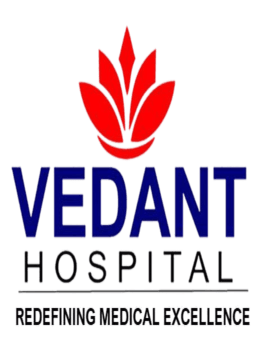Vascular surgery
Vascular surgery is a specialized field of surgery that focuses on the diagnosis, management, and treatment of diseases and conditions affecting the blood vessels, including arteries, veins, and lymphatic vessels. Vascular surgeons treat conditions ranging from arterial blockages, aneurysms, and varicose veins to more complex vascular diseases like deep vein thrombosis (DVT) and vascular malformations.
Here’s an overview of the major types of surgeries that fall under vascular surgery:


Aortic Surgery
Aortic surgery addresses issues involving the aorta, the largest artery in the body, which carries blood from the heart to the rest of the body. It is typically performed for conditions like aneurysms or dissections.
- Abdominal Aortic Aneurysm (AAA) Repair:
- Open Surgical Repair: Involves making an incision in the abdomen to remove the aneurysm and replace it with a synthetic graft.
- Endovascular Aneurysm Repair (EVAR): A minimally invasive procedure where a stent graft is inserted through small incisions in the groin and placed inside the aneurysm to reinforce the aorta and prevent rupture.
- Thoracic Aortic Aneurysm Repair: Surgery to repair an aneurysm in the thoracic aorta, located in the chest. This can involve open surgery or endovascular techniques.
- Aortic Dissection Repair: A tear in the inner layer of the aortic wall can lead to life-threatening complications. Surgery is performed to repair the dissection and re-establish blood flow.
- Aortic Bypass Surgery: A procedure to bypass a blocked section of the aorta, usually done in cases of atherosclerosis or other blockages.
Carotid Artery Surgery
Carotid artery surgery treats narrowing or blockage of the carotid arteries, which supply blood to the brain. This is crucial in preventing stroke.
- Carotid Endarterectomy (CEA): A procedure to remove fatty deposits (atherosclerotic plaques) from the carotid artery to restore blood flow and prevent stroke.
- Carotid Artery Stenting: A minimally invasive procedure where a stent is placed inside the carotid artery to keep it open and improve blood flow. This is often an alternative to endarterectomy, particularly in high-risk patients.
Peripheral Arterial Disease (PAD) Surgery
PAD is a condition in which the arteries that supply blood to the limbs become narrowed or blocked, leading to pain, ulcers, or even limb loss.
- Peripheral Artery Bypass Surgery: A procedure to bypass a blocked artery using a graft (either from the patient’s own body or synthetic) to restore blood flow to the legs or feet.
- Angioplasty and Stenting: Involves using a balloon catheter to open up a narrowed artery and placing a stent to keep the artery open, improving blood flow.
- Endarterectomy: Surgical removal of plaque from the walls of the arteries, performed in cases of significant blockages.
- Thromboembolectomy: A procedure to remove a clot (embolus) that is blocking blood flow in the arteries of the arms or legs.
Venous Surgery
Venous surgery treats conditions related to the veins, such as varicose veins, venous insufficiency, and deep vein thrombosis (DVT).
- Varicose Vein Surgery: Surgical treatment for enlarged and twisted veins, often in the legs.
- Vein Stripping: A traditional surgical procedure where the affected vein is removed.
- Endovenous Laser Therapy (EVLT): A minimally invasive procedure that uses laser energy to close off varicose veins.
- Sclerotherapy: Injection of a sclerosing solution into the varicose veins to collapse and seal them off.
- Radiofrequency Ablation (RFA): A minimally invasive procedure using heat generated by radiofrequency energy to close off the affected veins.
- Deep Vein Thrombosis (DVT) Surgery: Surgery to treat DVT, a condition in which blood clots form in the deep veins, typically in the legs.
- Thrombectomy: Removal of the blood clot that is obstructing the vein.
- Inferior Vena Cava (IVC) Filter Placement: A filter is inserted into the inferior vena cava to prevent blood clots from reaching the lungs and causing a pulmonary embolism.
- Chronic Venous Insufficiency (CVI) Treatment: Surgery to treat CVI, where veins fail to return blood from the legs to the heart.
- Vein Bypass Surgery: Creating a bypass to reroute blood flow around damaged veins.
- Venous Valve Reconstruction: Surgery to repair or replace the damaged valves in veins.
Arteriovenous Fistula and Graft Surgery
Arteriovenous fistulas or grafts are surgically created connections between arteries and veins, commonly used for dialysis in patients with kidney failure.
- Arteriovenous Fistula Creation: A surgical procedure to connect an artery directly to a vein, usually in the arm, to create a site for hemodialysis.
- Arteriovenous Graft Placement: A synthetic graft is used to connect an artery and vein if a fistula cannot be created due to poor vein quality.
Aneurysm Repair
Aneurysms can occur in various parts of the body, such as in the brain, legs, and aorta. Repairing aneurysms is critical to prevent rupture and life-threatening bleeding.
- Endovascular Aneurysm Repair (EVAR): A minimally invasive procedure used to treat aneurysms in the aorta and other arteries by placing a stent graft inside the aneurysm to reinforce the artery wall.
- Open Aneurysm Repair: Traditional open surgery where the aneurysm is removed and replaced with a synthetic graft, used for larger or more complex aneurysms.
- Cerebral Aneurysm Repair: Surgery to treat aneurysms in the brain, which may involve clipping the aneurysm or endovascular techniques to seal it off.
Mesenteric Artery Surgery
The mesenteric arteries supply blood to the intestines. A blockage or narrowing of these arteries can lead to mesenteric ischemia, causing pain and digestive issues.
- Mesenteric Bypass Surgery: A procedure to bypass blocked mesenteric arteries and restore blood flow to the intestines.
- Angioplasty and Stenting: Involves using a catheter to insert a stent into the mesenteric arteries to open up blockages.
Lymphatic Surgery
Lymphatic surgeries focus on treating conditions related to the lymphatic system, such as lymphatic malformations, lymphedema, and vascular malformations.
- Lymph Node Biopsy: Removal of lymph nodes for diagnostic purposes, especially in cases of cancer or infections.
- Lymphatic Bypass Surgery: A procedure to bypass blocked or damaged lymphatic vessels to restore the flow of lymph fluid, often performed in cases of lymphedema.
- Lymphadenectomy: Removal of lymph nodes, often done to treat or stage cancer, especially in cases of breast cancer or melanoma.
Endovenous Procedures
Endovenous procedures are minimally invasive techniques used to treat varicose veins and venous insufficiency.
- Endovenous Laser Therapy (EVLT): A procedure in which laser energy is used to close off malfunctioning veins, improving blood flow and reducing varicose veins.
- Sclerotherapy: Injection of a sclerosing agent into veins to collapse and seal them off, used for smaller varicose veins or spider veins.
- Radiofrequency Ablation (RFA): A minimally invasive procedure that uses heat from radiofrequency energy to close off varicose veins.
Endovascular Surgery
Endovascular surgery involves procedures performed inside blood vessels using catheter-based techniques. These surgeries are minimally invasive and often performed with local anesthesia.
- Angioplasty: A procedure in which a balloon catheter is used to open a blocked artery, restoring blood flow.
- Stent Placement: Involves placing a stent (a mesh tube) inside an artery to keep it open and prevent it from collapsing or becoming blocked again.
- Endovenous Stenting: The placement of a stent in veins to treat venous insufficiency or blockages.
- Thrombolysis: The use of medication to dissolve blood clots in arteries or veins.
Vascular surgery encompasses a wide range of procedures aimed at treating diseases and disorders affecting the blood vessels. These surgeries are critical for improving blood flow, preventing complications like strokes or limb loss, and addressing life-threatening conditions like aneurysms and venous thrombosis. Advances in endovascular techniques have allowed many procedures to be performed with smaller incisions, reducing recovery times and risks for patients.
Online simple step for appointment

Make Appointment

Select Doctor

